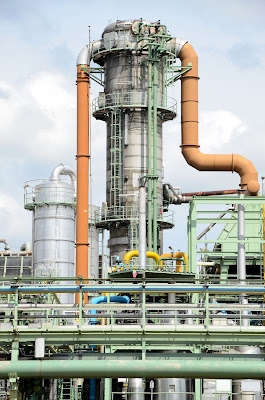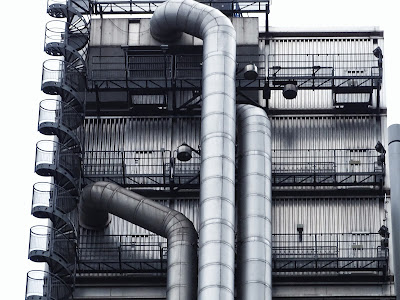Piping engineering design is not just about designing pipes to transport fluids. It is also about designing the connection between the pipes and the vessels, valves, pumps, or control systems.
Below are some tips on how to make a great piping engineering design:
1) Start by understanding what your client needs so that you can communicate your strategy.
2) Establish clear objectives for every piping engineering project at the outset so that you know when you have reached it.
3) Keep track of all your designs in a portfolio and evaluate them at regular intervals to see what could be improved further.
4) Don’t forget to include safety features in your design such as emergency shut-off valves and pressure relief valves.
A piping engineer is often required to design pipes for a variety of purposes, including engineering gases, liquids, or power. Piping Engineers are responsible for making sure that the design of the piping is adequate, cost-efficient, and safe.
 |
| Photo by Paul Teysen on Unsplash |
Introduction: What's Piping Engineering Design and Why Should I Care?
Piping engineering design is a vital and integral part of the process of designing and operating a piping system. Piping engineers need to be proficient in many areas of knowledge to perform this task.
Piping engineering design is the process of designing and evaluating the piping system for a project using various principles such as fluid mechanics, heat transfer, thermodynamics, pressure, and flow.
Pipeline engineering is an important engineering discipline that includes the analysis, design, selection, and installation of pipelines for the transportation of fluids. Piping engineers also need to design piping systems for closed or semi-closed loop systems.
Piping engineers provide a variety of services including pipeline project management, pipeline specification writing, and cost estimation, process piping design and troubleshooting, instrumentation and control system design and sizing, corrosion prevention in pipelines.
Piping engineering has many applications like in the oil exploration industry for example where it is used to take natural gas from wells to refineries.
What is the Purpose of Piping Engineering Design?
The purpose of piping engineering design is to promote the flow of material and energy through the pipes. It ensures that the pipes are designed in a way that they can withstand high pressure, temperature, vacuum, and corrosive material.
Piping engineering design is very important for construction projects. It promotes the efficiency of more expensive materials by helping with the maintenance of existing systems.
Piping engineering design is the process of creating a plan for piping systems. It is the main subject of piping engineering, which includes all activities involved in designing and assembling a system to transport fluid from one point to another.
Piping engineering design is necessary because it takes into account the needs of future users and end-users. The system will be used by people who need water, gas, oil, or other fluids to be transported from their point of production to the point where they are needed.
Piping engineers work with fluid flow equations as well as knowledge about how these fluids behave to create an efficient pipe system that will have little impact on the ground around it.
The Importance of Communication in Piping Engineering Design & Construction
Communication is an important aspect of design and construction, often overlooked until too late.
When it comes to piping engineering design and construction, communication is the backbone of the industry. Communication is essential for both design and construction, as well as the operation and maintenance of piping systems after they are built.
Communication can be seen as the lifeline for any kind of engineering project; without it, everything can grind to a halt. Communication ensures that information moves through an organization promptly, which is especially important when designing or constructing pipes. This requires engineers to communicate with each other concerning what has been done, what needs to happen next, what needs to happen now, who will do what task by when etcetera.
Communication is a fundamental quality in any design and construction project. In piping engineering, for instance, it is a crucial factor in the success of the project. Communication is crucial to ensure that team members have a clear understanding of what they are required to do and what needs to be done.
In pipe designing, communication is an essential requirement that guarantees that the desired outcome could be achieved without complication or error that would have been unavoidable if it was not properly executed.
Communication is an important component when it comes to designing and constructing pipes. Especially when it comes to piping engineering, good communication can make or break a project, as it ensures that everyone has a clear understanding of their role and what needs to be done before any work starts.
 |
| Photo by Belinda Fewings on Unsplash |
Types of Pipelines That Can Be Designed with a Good Pipeline Design or Pipeline Engineering Designs
There are many different types of pipelines that can be designed. These pipelines need a good pipeline design or pipeline engineering design that will help in the future of this industry.
Some of the types that can be designed are: linear, branching, and looping pipelines. Linear pipelines are when there is just one possible path for an event to go through to complete it. Branching pipelines are when there is more than one possible path for an event to go through to complete it. Looping pipelines are when there is more than one possible path for an event to go through to complete it but they all lead back to the same place so they don't accomplish anything new.
A pipeline is a sequence of events, actions, and/or processes linked in series so that the output or outcome of one event/action/process becomes the input or starting point for the next event. The more linear and predictable such sequences are, the more reliable they become. A pipeline can be described as a "multi-stage process" in which progress is achieved through sequential stages.
Pipeline engineering designs deal with designing a set of processes to handle data from start to finish. Pipeline engineers create a set of steps to move data from one place to another for processing and transformation with logical connections between each step in the process.
Pipeline Components in a Pipeline System and Their Functions/Functions in a Pipeline System
A pipeline system is a network of components, processes, and activities that are set up to move digital products from one place to another. The pipeline starts with the idea for the product, then moves through different stages of development before it's released to customers.
The Pipeline Components in a Pipeline System and Their Functions can be divided into three main categories:
1. Inputs: the raw material that enters the pipeline;
2. Processes: transformation steps along the way;
3. Outputs: artifacts delivered at the end of the pipeline system.
A pipeline system is a network of pipes that conveys substances. The pipelines are designed to transport fluids in a safe, economical, and reliable manner. Pipeline systems can be found in various settings including power plants, refineries, natural gas processing plants, chemical factories, water treatment facilities, oil wells, and offshore platforms.
Pipeline components are the pieces that make up the pipeline system. There are three types of pipeline components: valves, fittings, and stationary equipment. Valves are mechanical devices that regulate the flow of substances through pipelines by opening or closing an aperture to allow or prevent passage respectively. Fittings connect two pieces of piping to form a larger pipeline system while stationary equipment is anything that does not move but either carry fluids or helps control the flow in some way.








0 Comments